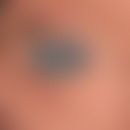DefinitionThis section has been translated automatically.
Dysmorphobia or "body dysmorphic disorder" is an excessive preoccupation with a suspected deficiency or disfigurement of the physical appearance. This deficiency is usually imaginary. If there is indeed a slight physical abnormality, the concern of the person concerned is excessively exaggerated. This pathological attitude towards existing or imagined physical problems leads to lasting social, professional and other impairments (see below somatoform disorders).
Occurrence/EpidemiologyThis section has been translated automatically.
As the suffering is spread over various medical disciplines and is not always recognised as a mental disorder, there is no reliable data.
You might also be interested in
ManifestationThis section has been translated automatically.
Slight predominance of the female sex. Younger age groups are more likely to be affected, often already teenagers.
DiagnosisThis section has been translated automatically.
Characteristic personality traits in body dysmorphic disorders:
- deep inferiority feelings
- Sensitivity with depressive tendency
- narcissistic ("narcissistic") overestimation of oneself
- exaggerated self-observation
- exaggerated normative concepts
- idealized concept of beauty
- excessive introversion inclination ("introspection")
- pathological awe
- Communication weakness
- Relationship problems.
TherapyThis section has been translated automatically.
In general, medical specialists are confronted with this disorder, i.e. dermatologists, ENT and dentists, doctors of aesthetic medicine, etc. By empathetic understanding and patiently dealing with the seemingly bizarre problem, the ground can be prepared for an indispensable psychotherapeutic treatment (conversational psychotherapy, especially cognitive-behavioural therapy or depth psychological-analytical).
Note(s)This section has been translated automatically.
The name was derived from "dys" (= un-, miss- ), "morphe" (= shape, outer appearance) as well as "phobios" (= fear, anxiety, timidity).
Outgoing links (1)
Somatoform disorders;Disclaimer
Please ask your physician for a reliable diagnosis. This website is only meant as a reference.




